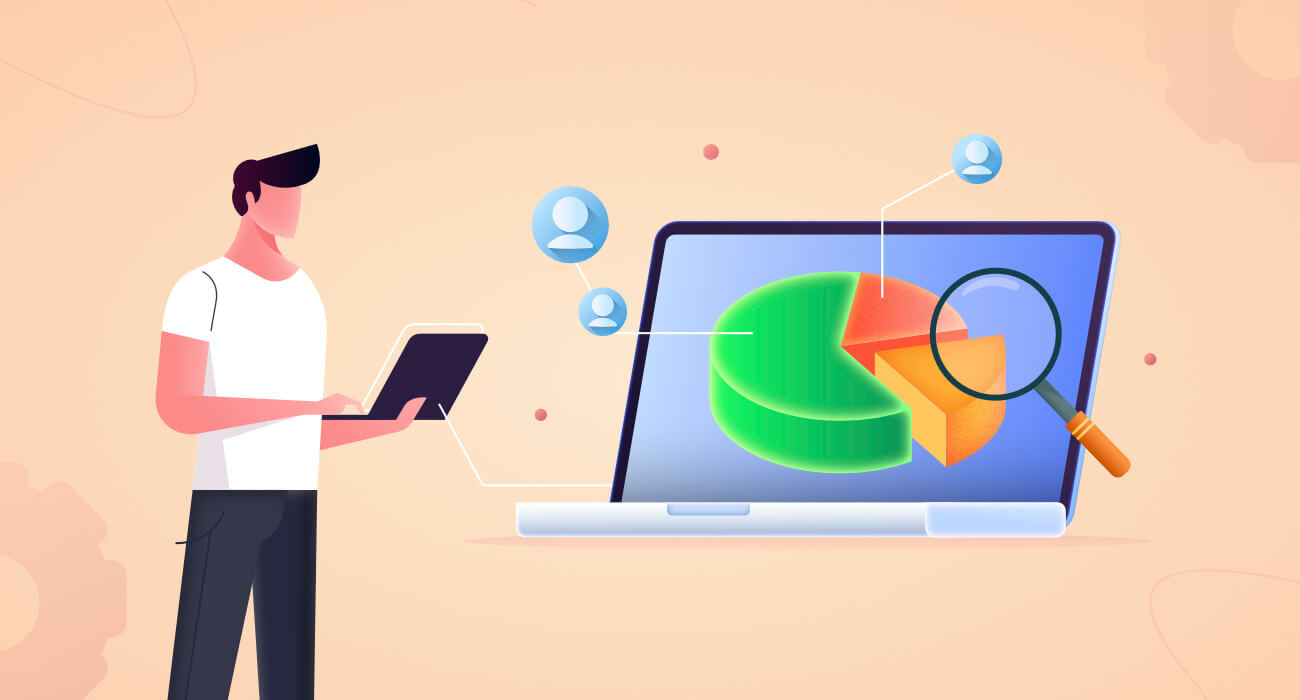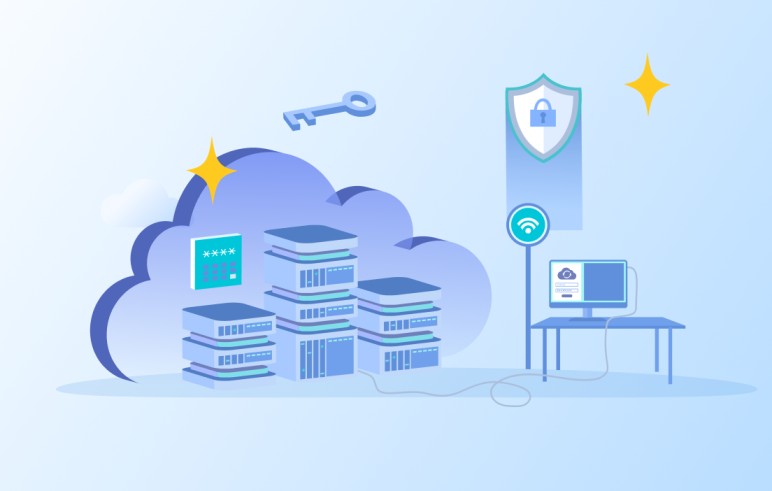Businesses are able to target their most-wanted prospects with a better success rate thanks to data-driven decision-making. According to HubSpot, surveyed marketers who segregate consumer data for their ads saw a revenue boost of up to 760%.
Mailchimp has confirmed that segmented email marketing campaigns have a 23% higher open rate and a 49% higher click-through rate than campaigns that are not segmented. However, segmenting data is about far more than just email marketing effectiveness.
The following guide will walk you through the fundamentals of what is data segmentation and how to apply it to your company.
What Is Data Segmentation?
A functional concept of data segmentation would be the dissection of account-related data using various criteria and its arrangement into particular categories to make it more usable for marketing and sales initiatives.
Data segmentation makes it easier to collect, qualify, and integrate customer data that may be used to create accurate ideal customer profiles (ICP) that are useful for account-based marketing engines.
Data Segmentation Techniques
Everything in the data segmentation process boils down to determining which types of audience data are genuinely relevant to your company and how you intend to use them.
Even if some businesses benefit from some or all of the segmentation approaches listed below, it's critical to understand the uses and consequences of each before opting to implement them.
Customer Profiling
The simplest strategy on this list is customer profiling. To construct a solid consumer profile, you primarily rely on demographics and behavioral features analysis. It takes the most basic information you can get about your target, such as age, gender, location, income, and so on, and runs it through analytical and operational profiling.
Analytical profiling examines the customer's behaviors (often digital) and compares them to the demographic data acquired. Analysts can determine which customer segmentation data strategies were the most relevant after the outcome of the company's engagement with the client is recorded.
Predictive Modeling
The second method, predictive modeling, is linking many layers of data points that already reflect a behavioral pattern and assessing the outcomes of various decision-making scenarios over a period of time.
Customer data segmentation will identify the variables that cause a shift in a result. Even if technology isn't quite up to the task of making perfect forecasts, it's feasible to expect when a prospect is more likely to pick up the phone, check an email, or accept a meeting.
To partition the dataset into train and test sets and perform high-end information analysis, an internal data specialists team or an outsourced data partner, and a data visualization tool would be required.
Customer State Vector
This data segmentation technique ensures that all of a customer's interactions with the company's goods and services are covered from all angles, and it centralizes the information acquired from the many customer acquisition departments.
A data-based company would be able to create complex models that might forecast statistical results from comparable ICPs inside a certain target account list by analyzing the consolidated data from all contacts with the brand.
Event-Driven Marketing
This data segmentation technique entails analyzing specific events that occurred within a sales funnel, learning about the good and negative effects they had along the route, and intentionally activating similar events in the conversion's favor.
There are two types of occurrences that occur at such times: obvious and latent. The obvious kind refers to one-time abnormalities, random actions, or unconnected decisions that transactional systems and detection engines may quickly discover.
Trends are more prevalent in latent events. Depending on the volume of processed data and the length of a time frame, it may be difficult to see the repeat of these acts (particularly for B2B high-end decision-makers), but more advanced big data analysis tools may be utilized to uncover associated event-driven patterns.
Real-Time Decisioning
Real-time choices are based on a customer's historical, demographic, behavioral, and real-time data, and can be decided by merging these elements with data from other systems via Web services. This is comparable to a customer state vector in that it enables better coordinated and simplified communications across all channels in real-time.
This is especially important when a call center agent can transmit the most appropriate offer to a customer over the phone, or when a prospect browsing the Web is provided with the proper form of insurance for her current requirements.
Why is Data Segmentation Important?
The benefits of creating well-defined data segments may be seen throughout the organization. Every day, your sales and marketing teams rely on data to help them decide who to contact and how to reach out to them. Your staff can utilize their time more effectively if they know who their greatest customers are, what they care about, and what form of communication they prefer. You may also utilize your results to evaluate leads and prioritize accounts in your pipeline that are well-qualified.
Data segmentation aids in cyber security as well. By restricting the number of network sections that may access your data caches, It creates a barrier around them. With fewer segments having access to data, hackers will have fewer ports of entry to take anything of worth. You lower the risk of data loss and theft by limiting access and implementing local security policies.
Benefits of Data Segmentation
Data should be categorized not just by use cases and types of information, but also by the sensitivity of the information and the amount of authorization required to access it. Different big data security settings and authentication rules should be defined based on the data segment at hand after it has been segmented.
The goal of data segmentation is to categorize your data, segregate the most critical data from the rest and designate it as your protect surface, and then implement extra security measures around any protect surfaces you've found. Even if there is a breach, your most sensitive information is now secured by additional levels of protection.
Reduced Cybersecurity Threats
Companies are constantly subjected to external and internal cybersecurity risks. Many businesses are moving toward zero trust policies and architecture, or policies based on the principle of "trusting no one and validating everything," to offset some of the potential damage.
One of the first and most crucial tasks in building a zero-trust network is data partitioning. The procedure assists you in mapping out your data and determining who needs access, what they require access to, when they require access, and how they should be able to access that data. Data segmentation organizes and secures data, reducing the entire attack surface of your network and safeguarding it from assaults, whether internal or external, unintentional or purposeful.
IoT, And Edge Security
More devices, especially IoT and edge devices, can now store and process network data; however, they frequently lack the security and authentication features found in cloud data centers. If an undesired visitor or device gets past your firewall via IoT or edge devices, your data segmentation provides a degree of protection around your data that IoT and edge device interfaces alone may not be able to provide.
Personal Data Protection
Even outside of business networks, data segmentation techniques creates safe micro perimeter and authentication requirements around personal data, implying that if an extensive network is compromised, extra precautions are most likely taken to protect your personal data. Banks, healthcare organizations, and credit card firms are just a few of the many businesses that use data segmentation to protect their customers' privacy and security.
Improved Marketing Strategy
Data segmentation has a number of advantages when it comes to marketing. It allows you to communicate with your audience more effectively. You may customize a message to your individual clients rather than delivering a general message to all consumers. Using augmented data to segment your consumer base is a simple example of this. Data segmentation helps you to target diverse audiences more effectively, in addition to a more focused approach. Your message will be more relevant and tailored to the people that matter to you.
Data segmentation marketing may help your company become more effective. You can figure out which items and services are ideal for your clients if you know their demographics.
Challenges with Data Segmentation
Those that successfully identify and maintain customer segmentation data can get a competitive advantage from implementing personalized customer experience, t. However, there are some flaws that might detract from the efficiency of a client segmentation program.
Even with all of the advancements in personalization, the process is not without its difficulties. According to recent research, 94% of respondents face customization issues. The most difficult aspect is acquiring understanding soon enough. Then there's having enough data and having erroneous information.

Having Enough Data
It's doubtful that there won't be enough data to segregate in most circumstances. Data segmentation may deliver hyper-personalized insights into client groups even with lesser datasets.
Smaller organizations with little customer data can provide highly personalized sales communications by segmenting B2B or B2C prospect lists. Similarly, having too much data does not prevent you from segmenting it. With customer segmentation data, you may certainly find critical insights if you have a dataset of any size.
Unable to Gain Insight from Data
Despite the fact that there is more data than ever before, the vast majority of businesses have yet to realize the full value of improved data insights. PwC and Iron Mountain recently conducted a poll to determine how successful businesses are deriving value from data. The findings revealed a significant gap between the information accessible to businesses and the real insights drawn from it.
It might be an unorganized process to turn data into useful insights. Fortunately, there are a number of ways available to assist professionals in moving from data requirements to meaningful insights. Marketers must set criteria for dealing with data successfully, akin to an architect's plan.
Gaining Insight Quickly Enough
A data segmentation technique based on human statistical modeling cannot catch the hundreds of fields and rows that come from various data sources. Machines will outperform humans on things that can be mechanized. They can collect more complexity, condense it to a consumable format, and replicate their processes with ease. Furthermore, a system that relies on hundreds of data fields in an automated manner generally lacks the transparency required to drive decision-making.
Use of Machine Learning in Data Segmentation
In recent years, machine learning, or artificial intelligence algorithms that recognize statistical regularities in data, have made it simpler. Machine learning models can be used to analyze customer data, which can then be utilized to detect repeated trends across a range of factors.
Marketing analysts can use machine learning algorithms to uncover customer subgroups that are difficult to recognize using intuition and human data analysis. Machine learning is a great tool for consumer segmentation data and marketing in general. It will almost definitely never be able to replace human intuition and decision-making, but it can assist humans in reaching previously unachievable goals.
Data Segmentation Security
According to the zero-trust strategy paper issued in September by the Office of Management and Budget, agencies would be forced to partition their networks in a more detailed manner as they shift to a zero-trust paradigm.
Data segmentation, in addition to endpoint detection and response technologies and tools for gaining deeper insight into networks, can play a crucial role in how agencies respond to cybersecurity incidents. Segmentation reduces the possible breadth of an initial breach by preventing an attacker who compromises a system in one segment from pivoting to other parts of the network.
Regardless matter how much sensitive data is housed in their systems, every network should use data segmentation. Other sensitive data, such as your top B2B clients, interactions with customers, and even a rent discount on your office building, may become sensitive, destructive information in the wrong hands, besides standard PII and PHI.
Not just for anticipated and unanticipated cybersecurity demands, but also for a better understanding of your inbound and outbound marketing plans, data segmentation is essential.
Conclusion
Businesses can use data segmentation to their advantage. It enables you to expand your product line, support your data mining techniques, personalize your marketing, and boost your chances of engaging with clients and developing your business. It also improves your security and protects you from complete cyber-breach and adds an additional level of protection to your network.
Although the process can be difficult, it's definitely worth taking the effort to anticipate and work around any roadblocks.
how are you














Leave a Reply